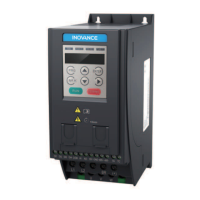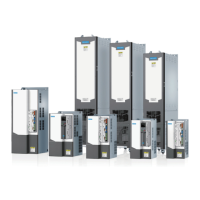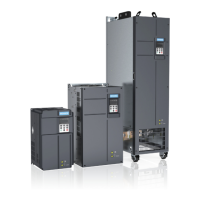Function Application
‑608‑
Table 3–33 FDT
Para.
No.
Function Default
Value Range Description
F8‑19
Frequency detection
value (FDT1)
50.00 Hz
0 to max.
frequency (F0‑10)
When the running frequency is above the frequency
detection value (FDT1), the DO terminal outputs the
active signal. When the running frequency is below the
result of the frequency detection value (FDT1) minus
the frequency detection hysteresis (FDT1), the DO
terminal outputs the inactive signal. The valid range is
0.00 Hz to F0‑10 (max. frequency).
F8‑20
Frequency detection
hysteresis (FDT1)
5.0% 0.0% to 100.0%
Frequency detection hysteresis (FDT1) = F8‑19 x F8‑20
When the running frequency is above F8‑19, the DO
terminal outputs the active signal. When the running
frequency is below a specific value (F8‑19 ‑ F8‑19 x F8‑
20), the DO terminal outputs the inactive signal.
F8‑28
Frequency detection
value (FDT2)
50.00 Hz
0 to max.
frequency (F0‑10)
When the running frequency is above the frequency
detection value (FDT2), the DO terminal outputs the
active signal. When the running frequency is below the
result of the frequency detection value(FDT2) minus the
frequency detection hysteresis (FDT2), the DO terminal
outputs the inactive signal. The valid range is 0.00 Hz to
F0‑10 (max. frequency).
F8‑29
Frequency detection
hysteresis (FDT2)
5.0% 0.0% to 100.0%
Frequency detection hysteresis (FDT2) = F8‑28 x F8‑29
When the running frequency is above F8‑28, the DO
terminal outputs the active signal. When the running
frequency is below a specific value (F8‑28 ‑ F8‑28 x F8‑
29), the DO terminal outputs the inactive signal.
3.5.2.3 Jump Frequency
You can set the jump frequency to enable the AC drive to avoid mechanical resonance
point of load. The AC drive supports two jump frequencies. If both of them are set to
0, the jump frequency function is disabled.

